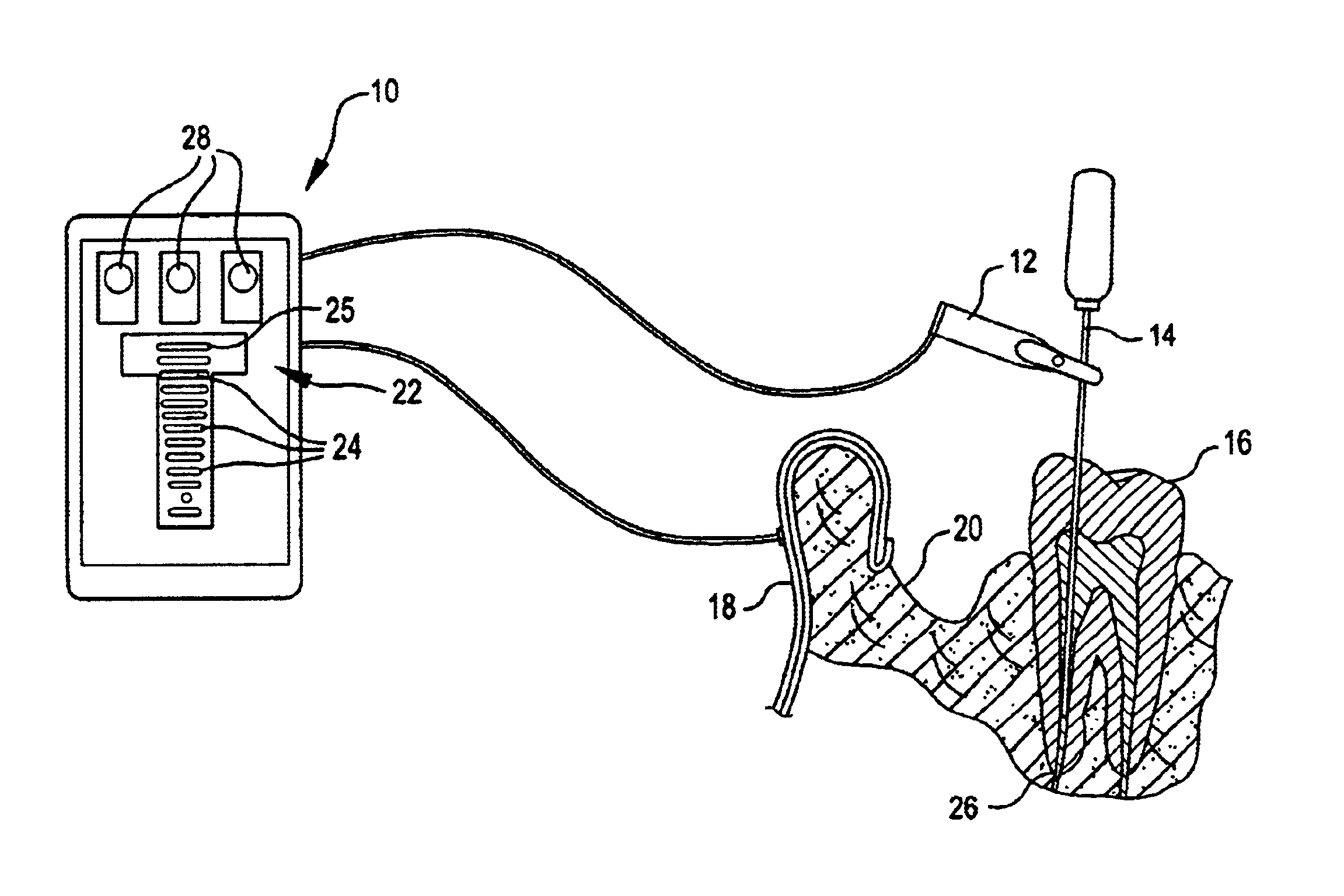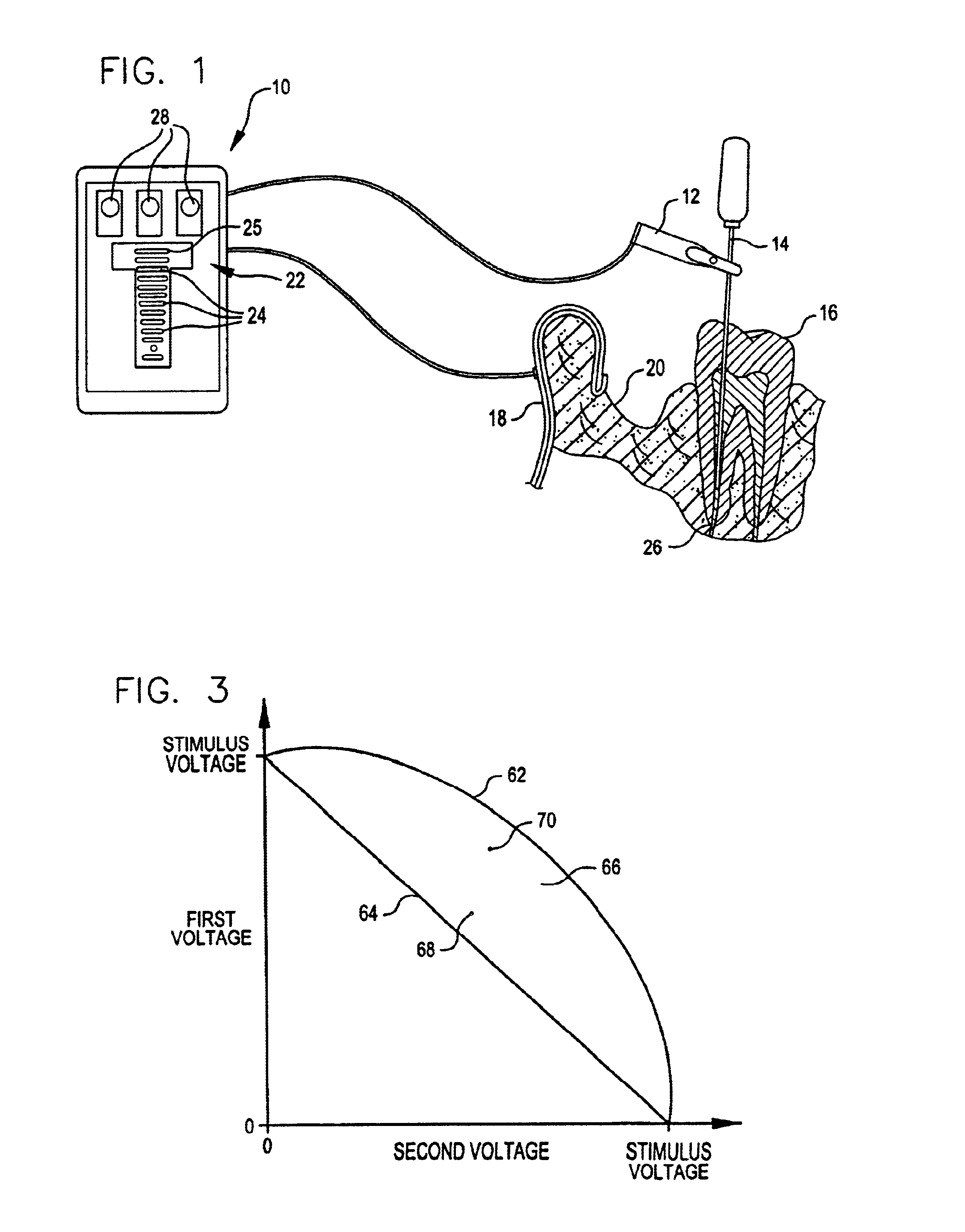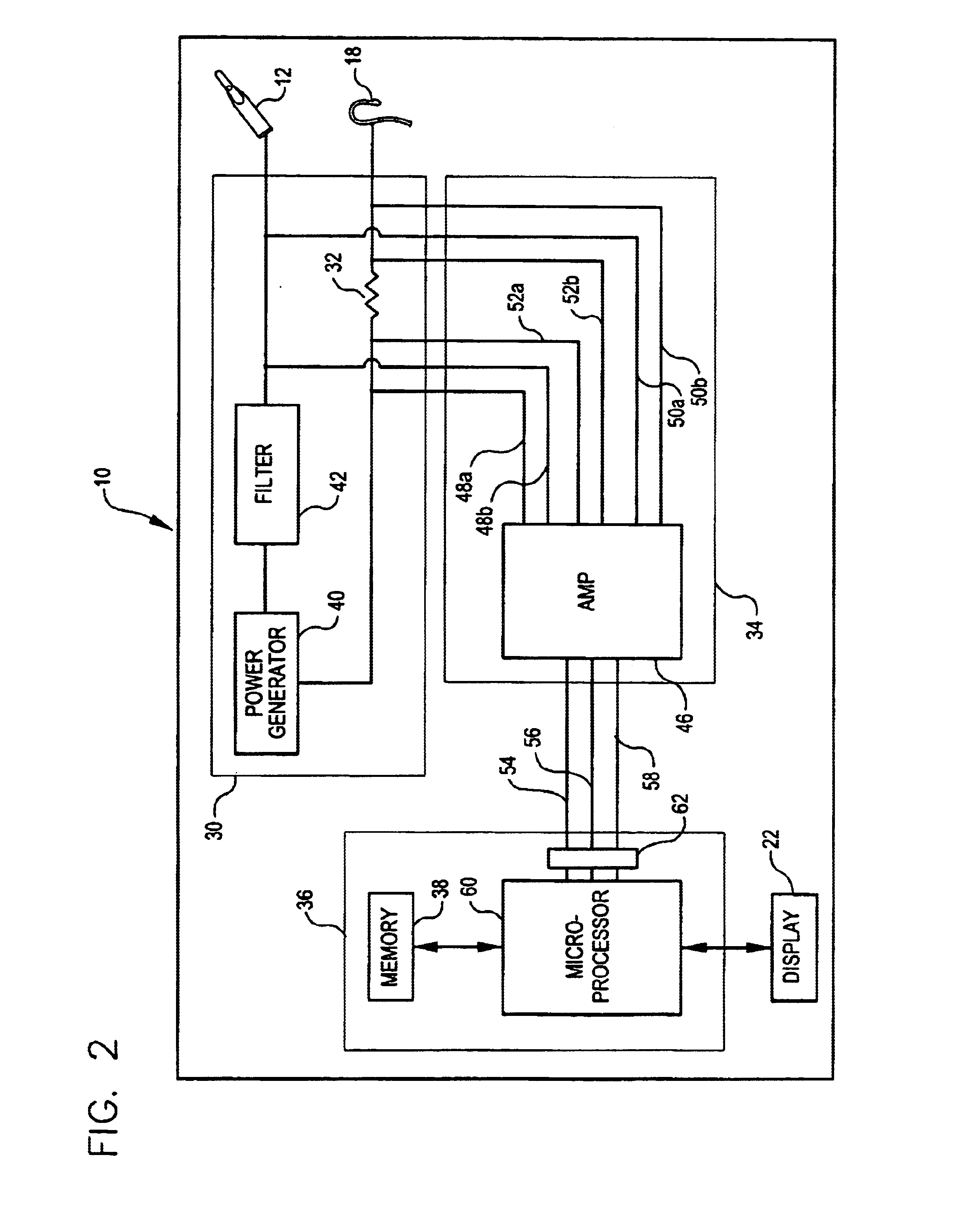Systems and methods for locating a tooth's apical foramen
- Summary
- Abstract
- Description
- Claims
- Application Information
AI Technical Summary
Benefits of technology
Problems solved by technology
Method used
Image
Examples
Embodiment Construction
The present invention provides an apical foramen locator that a dental or medical practitioner can use to quickly and accurately identify the location of a patient's apical foramen during a dental / medical procedure. The apical foramen locator determines the location of the apical foramen relative to a tool inserted into the patient's tooth by sensing an impedance—typically the voltage across two, electrodes—and a stimulus voltage, and retrieving from an impedance map apical foramen location data that corresponds to the sensed impedance. By using an impedance map generated from reference teeth similar to the patient's tooth and a stimulus voltage having a single frequency, the apical foramen locator can quickly and accurately identify the location of a tooth's apical foramen.
The apical foramen locator can include a power circuit operable to apply a stimulus voltage across two electrodes and a reference resistor, wherein the reference resistor is connected to one of the electrodes. Th...
PUM
 Login to View More
Login to View More Abstract
Description
Claims
Application Information
 Login to View More
Login to View More - R&D
- Intellectual Property
- Life Sciences
- Materials
- Tech Scout
- Unparalleled Data Quality
- Higher Quality Content
- 60% Fewer Hallucinations
Browse by: Latest US Patents, China's latest patents, Technical Efficacy Thesaurus, Application Domain, Technology Topic, Popular Technical Reports.
© 2025 PatSnap. All rights reserved.Legal|Privacy policy|Modern Slavery Act Transparency Statement|Sitemap|About US| Contact US: help@patsnap.com



